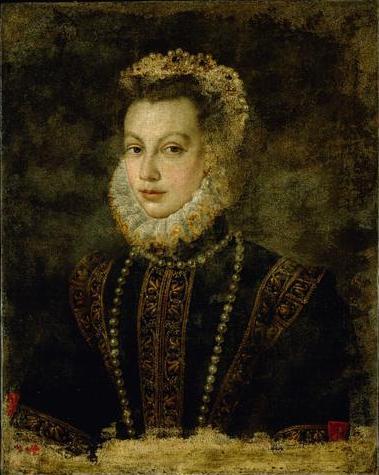italianartsociety:By Anne LeaderSofonisba Anguissola died either 16 or 19 November 1625 in Palermo,
italianartsociety:By Anne LeaderSofonisba Anguissola died either 16 or 19 November 1625 in Palermo, where she had retired after a career as lady-in-waiting to Isabel de Valois, Queen of Spain. She was in her 90s.Unlike the majority of women painters in Renaissance Europe (a notably small group), Sofonisba was not the daughter of an artist. Born in Cremona to a noble family, Sofonisba was the eldest of six sisters, five of whom studied painting. Sofonisba was the most accomplished and, extraordinary for women of her time, had a successful artistic career, focusing primarily on portraits of other wealthy Italians and members of the European nobility.She trained, as young men typically did, with the leading local artists of her day, Bernardino Campi (1522–1591) and Bernardino Gatti (c.1495-1576). Also more typical of male artists, Anguissola traveled to Rome in 1554, where she practiced drawing and met Michelangelo, who challenged her to portray a crying youth. She responded with a sketch of a young boy, likely her little brother Asdrubale, wincing as he is bitten by a crayfish. Michelangelo continued to encourage her development through an ongoing exchange of letters and drawings. Sofonisba was, however, excluded from studying anatomy or drawing from live models, typical practice in male-dominated workshops and academies of the day.Though she did not receive her own biography, Anguissola was included in Giorgio Vasari’s Lives of the Artists. Vasari concluded his life of Properzia de'Rossi with high praise for Anguissola:“But Sofonisba of Cremona , the daughter of Messer Amilcaro Anguisciuola, has labored at the difficulties of design with greater study and better grace than any other woman of our time, and she has not only succeeded in drawing, coloring, and copying from nature, and in making excellent copies of works by other hands, but has also executed by herself alone some very choice and beautiful works of painting. Wherefore she well deserved that King Philip of Spain, having heard of her merits and abilities from the Lord Duke of Alba, should have sent for her and caused her to be escorted in great honor to Spain, where he keeps her with a rich allowance about the person of the Queen, to the admiration of all that Court, which reveres the excellence of Sofonisba as a miracle. And it is no long time since Messer Tommaso Cavalieri, a Roman gentle man, sent to the Lord Duke Cosimo (in addition to a drawing by the hand of the divine Michelangelo, wherein is a Cleopatra) another drawing by the hand of Sofonisba, containing a little girl laughing at a boy who is weeping because one of the crayfish out of a basket full of them, which she has placed in front of him, is biting his finger; and there is nothing more graceful to be seen than that drawing, or more true to nature. Wherefore, in memory of the talent of Sofonisba, who lives in Spain, so that Italy has no abundance of her works, I have placed it in my book of drawings. We may truly say, then, with the divine Ariosto, that – “Le donne son venute in eccellenza / Di ciascun’ arte ov’ hanno posto cura.”Further reading: Marco Tanzi. “Anguissola.” Grove Art Online. Oxford Art Online. Oxford University Press.Self-Portrait at the Easel, c. 1556. Oil on canvas, Muzeum-Zamek, Lancet.Self-portrait with Bernardino Campi, ca. 1559. Oil on canvas, Pinacoteca Nazionale, Siena.Asdrubale Bitten by a Crawfish, c. 1554. Black chalk and charcoal on brown paper, Museo Nazionale di Capodimonte, Naples.Portrait of the Artist’s Sisters Playing Chess, 1555. Oil on canvas, Muzeum Narodowe, Poznan.Portrait of Queen Isabel de Valois, Queen of Spain, ca. 1599(?). Oil on canvas, Kunsthistorisches Museum, Vienna.Isabel de Valois, holding a Portrait of Felipe II, 1561-5. Oil on canvas, Museo Nacional del Prado, Madrid.Portrait of King Phillip II of Spain, 1565/1573. Oil on canvas, Museo Nacional del Prado, Madrid.Portrait of Queen Ana of Austria, Queen of Spain, 1573. Oil on canvas, Museo Nacional del Prado, Madrid.Portrait of a Nun (likely the artist’s sister Elena), 1551. Oil on canvas, City Art Gallery, Southampton. -- source link








